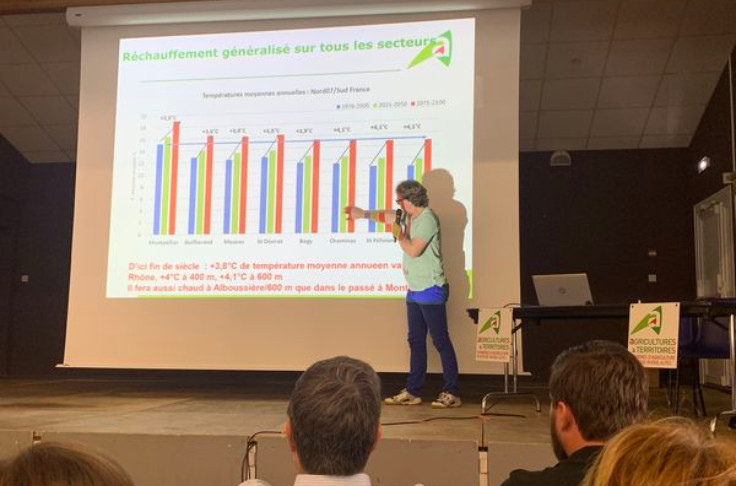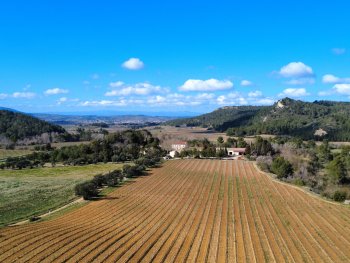C├┤tes-du-Rh├┤ne winegrowers faced with extreme climate change

he 180 organic winegrowers from Burgundy, Beaujolais, Provence and Savoy attending the Tech&Bio outreach day in Cornas on 7 July were absolutely stunned, not to say flabbergasted, by a presentation on the consequences of global warming for the Northern C├┤tes du Rh├┤ne wine region.
And they have every reason to be, judging by the data from the ‘Climat XXI’ climate change assessment and prevention programme by the chambers of agriculture. “The trends and figures that we get through simulations should help staff in the chambers of agriculture when dealing with producers across the wine regions”, said Emmanuel Forel, a consultant with the Ard├©che chamber of agriculture, before getting to the crux of the matter. “There are three main IPCC climate scenarios based on global policies to limit greenhouse gas emissions. According to the global weather data collected, we have seen that the most pessimistic scenario is actually occurring. So we are using this scenario to anticipate what could happen across our regions. By the end of the century, the average annual temperature will have risen by 3.8°C”, warned Forel. “The rise in average temperatures will occur towards the North, but also at altitude. This is a major phenomenon”. And there’s more bad news: “There should be a shift in the hot temperatures of July and August towards June and September”, said Forel. “We will have to contend with a full summer lasting four months”.
“This poses three challenges for winegrowing: an earlier start to the growing season; the increased risk of frost in the spring; and earlier harvesting”, warned Forel. “This raises questions about coping through use of grape varieties and rootstocks, but also a rise in vineyard elevation”.






